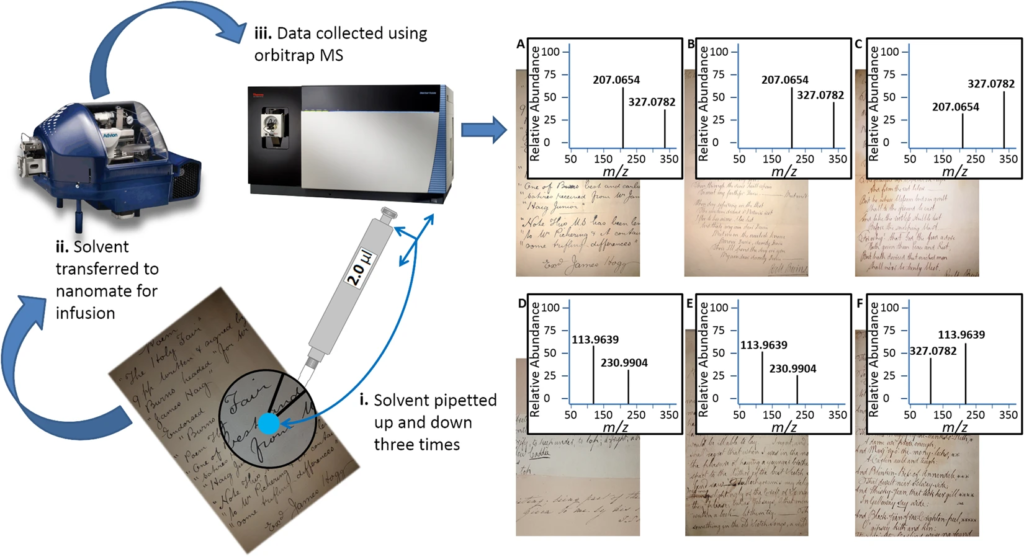Minimally-destructive atmospheric ionisation mass spectrometry authenticates authorship of historical manuscripts
University of Glasgow, University of Edinburgh

Authentic historic manuscripts fetch high sums, but establishing their authenticity is challenging, relies on a host of stylistic clues and requires expert knowledge. High resolution mass spectrometry has not, until now, been applied to guide the authentication of historic manuscripts. Robert Burns is a well-known Scottish poet, whose fame, and the eponymous ‘Burns Night’ are celebrated world-wide. Authenticity of his works is complicated by the ‘industrial’ production of fakes by Alexander Smith in the 1890s, many of which were of good quality and capable of fooling experts. This study represents the first analysis of the inks and paper used in Burns poetry, in a minimally destructive manner that could find application in many areas. Applying direct infusion mass spectrometry to a panel of selected authenticated Burns and Smith manuscripts, we have produced a Support Vector Machine classifier that distinguishes Burns from Smith with a 0.77 AUC. Using contemporary recipes for inks, we were also able to match features of each to the inks used to produce some of Burns’ original manuscripts. We anticipate the method and classifier having broad application in authentication of manuscripts, and our analysis of contemporary inks to provide insights into the production of written works of art.
